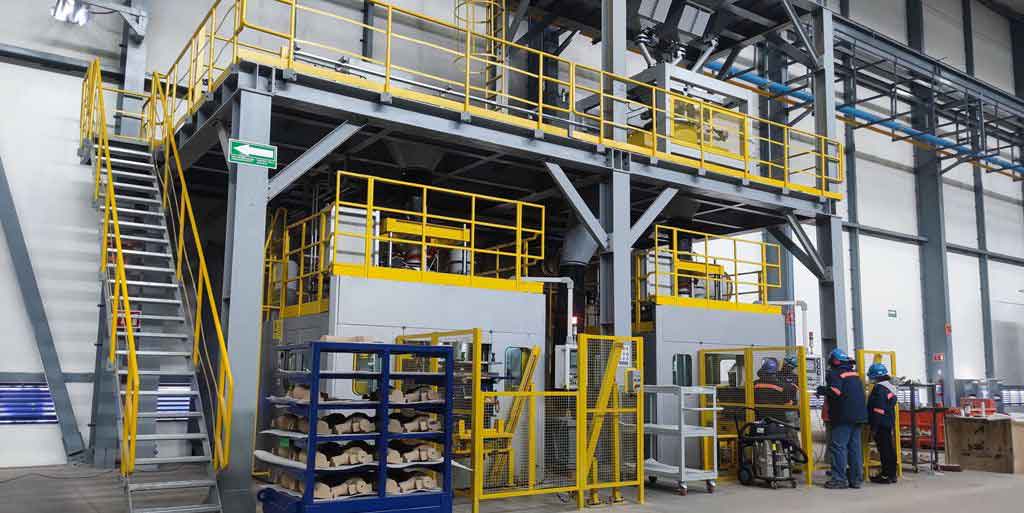In the production of ultra-supercritical steam turbine steel castings, ensuring internal quality and mechanical performance while mitigating defects like sand sticking remains a critical challenge. This article presents an innovative air-cooling system designed to address adhesion issues in narrow nozzle chamber structures, leveraging thermodynamic principles and practical validation.
1. Sand Sticking Defect Analysis
Nozzle chambers in high-pressure inner cylinders of steam turbines exhibit complex geometries with thin sand cores (as low as 15 mm). Prolonged exposure to high-temperature molten steel (G-X12CrMoWVNbN10 alloy) leads to severe sand sticking due to:
- Thermal erosion and FeO-Cr chemical reactions.
- Low core strength under mechanical and thermal stress.
2. Air-Cooling System Design

The system employs compressed air (0.7 MPa) flowing through embedded pipes to cool sand cores during casting. Key parameters include:
| Component | Specification |
|---|---|
| Inlet Pipe | ϕ25 mm |
| Outlet Pipe | ϕ20 mm |
| Cooling Duration | 180 s |
3. Thermodynamic Calculations
Energy Conservation:
$$ΔU = Q – W$$
Assuming work done \(W = 0\):
$$ΔU = Q$$
Convective Heat Transfer:
$$Q = AαΔt$$
Where:
\(A\) = Heat exchange area (m²)
\(α\) = Convection coefficient (W/m²·°C)
\(Δt\) = Temperature difference (°C)
Heat Removal by Airflow:
$$Q_{air} = C \cdot m \cdot Δt$$
For 0.7 MPa airflow (500 L/min):
$$Q_{air} = 5,\!543.85\ \text{W/m²} > Q_{theoretical} = 3,\!130.59\ \text{W/m²}$$
4. Implementation and Results
The air-cooling system achieved:
- Inlet temperature: 20°C → Outlet temperature: 60°C
- ΔT > 40°C ensured effective cooling
| Parameter | Before Cooling | After Cooling |
|---|---|---|
| Surface Defects | Severe sand sticking | No visible adhesion |
| Ultrasonic Testing | Rejected | Grade 1-3 compliance |
5. Conclusion
Integrating air-cooling systems in steel casting processes for turbine components:
- Reduces sand sticking by 100% in critical zones.
- Enhances dimensional accuracy of nozzle chambers.
- Minimizes post-casting cleanup costs.
Future applications will focus on optimizing airflow parameters for larger steel castings, ensuring scalability across industrial production.
